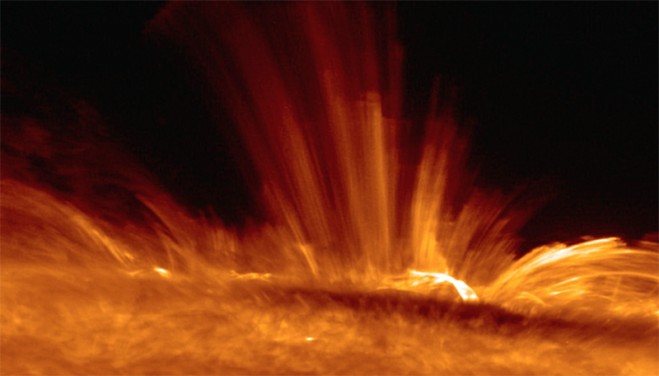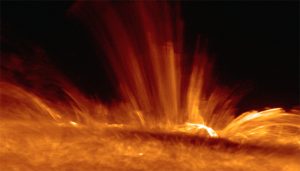

A Japanese research team tried to tackle this for the first time, evaluating how much energy is dissipated at the chromosphere through waves. Results show that the amount of dissipated energy is 10 times larger than the required energy to maintain the chromosphere. Therefore, waves could be responsible for heating the upper chromosphere up to its present values (i.e., 10,000 Kelvin).
This discovery was found thanks to an international collaboration among Japanese and U.S. solar-observing satellites. The Hinode mission revealed tiny fluctuations of physical parameters through spectropolarimetric observations, and the IRIS (Interface Region Imaging Spectrograph) performed spectroscopic observations to derive physical information of the upper chromosphere. The combination of these satellites made it possible to evaluate dissipated energy by comparing the energy fluxes obtained at the two atmospheric layers.

Hinode and IRIS satellites helped discover that the dynamic solar chromosphere could be heated and formed by dissipation of energy of waves. (Credit: NAOJ/JAXA)